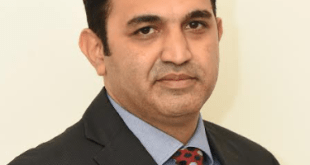Neuroimaging is a powerful tool that allows researchers and clinicians to visualise the structure and functionality of the human brain. Recent decades have witnessed significant progress in neuroimaging techniques, profoundly contributing to our comprehension of the brain and its involvement in a range of neurological and psychiatric disorders.
Unique neuroimaging techniques transforming healthcare.
Magnetic Resonance Imaging (MRI): Magnetic resonance imaging (MRI) is a non-invasive imaging technique that uses a strong magnetic field and radio waves to generate detailed images of the brain. MRI is commonly used to diagnose various neurological and psychiatric disorders such as Alzheimer’s disease, Parkinson’s disease, multiple sclerosis, and schizophrenia. MRI is capable of identifying alterations in the structure of the brain and can be employed to monitor the progression of these conditions over time. Moreover, functional MRI (fMRI) can detect variations in brain activity during cognitive and emotional tasks.
Positron Emission Tomography (PET): Positron emission tomography (PET) is a nuclear medicine imaging technique that uses radioactive tracers to measure brain activity. PET is commonly used to diagnose and monitor the progression of various neurological and psychiatric disorders such as Alzheimer’s disease, Parkinson’s disease, and depression. PET can measure the levels of neurotransmitters and receptors in the brain and can also be used to assess the effectiveness of treatments.
Single Photon Emission Computed Tomography (SPECT): Another nuclear medicine imaging technique, single photon emission computed tomography (SPECT), uses radioactive tracers to measure brain activity. SPECT is often employed to diagnose and monitor the progression of neurological and psychiatric disorders, including Alzheimer’s disease, Parkinson’s disease, and depression. By measuring blood flow to different regions of the brain, SPECT can evaluate the effectiveness of treatments as well.
Magnetoencephalography (MEG): Magnetoencephalography (MEG) is a non-invasive imaging technique that measures the magnetic fields generated by the electrical activity of the brain. MEG is commonly used to diagnose and monitor the progression of various neurological and psychiatric disorders such as epilepsy, schizophrenia, and depression. MEG can measure changes in brain activity with millisecond precision and can also be used to assess the effectiveness of treatments.
Transcranial Magnetic Stimulation (TMS): Transcranial magnetic stimulation (TMS) is a non-invasive technique that uses a magnetic field to stimulate neurons in the brain. TMS is commonly used to treat various neurological and psychiatric disorders such as depression, anxiety, and chronic pain. TMS can stimulate specific regions of the brain and can be used to modulate brain activity to improve symptoms.
These Neuroimaging techniques have brought about a revolutionary change in the field of neuroscience, significantly improving our ability to diagnose and treat neurological and psychiatric disorders. Here are some significant applications of neuroimaging in diagnosis and treatment.
Early Diagnosis: Neuroimaging techniques such as MRI, PET, and SPECT can detect changes in brain structure and activity that occur in the early stages of various neurological and psychiatric disorders. Early diagnosis can help clinicians to develop more effective treatment strategies and can also improve patient outcomes. For instance, in Alzheimer’s disease, neuroimaging can detect changes in the brain that occur years before symptoms appear. This early detection can help clinicians to intervene early with disease-modifying treatments, which may slow the progression of the disease.
Personalised Medicine: Neuroimaging techniques can be used to develop personalised treatment plans for patients with neurological and psychiatric disorders. By measuring changes in brain activity and structure, clinicians can tailor treatment plans to meet the individual needs of each patient. In depression, neuroimaging can identify specific brain regions that are affected in each patient. This information can be used to develop personalised treatment plans, such as transcranial magnetic stimulation (TMS) targeted to those specific regions.
Monitoring Disease Progression: Monitoring the progression of neurological and psychiatric disorders over time is possible with the help of neuroimaging techniques. By measuring changes in brain structure and activity, clinicians can assess the effectiveness of treatments and make adjustments as needed. For example, in multiple sclerosis, MRI can track changes in brain lesions over time, which can be used to monitor disease progression and assess the effectiveness of treatments.
Developing New Treatments: Neuroimaging techniques can be used to identify new targets for drug development and to test the effectiveness of new treatments. For instance, in Parkinson’s disease, neuroimaging can reveal affected brain regions, which could help in the development of drugs that target these regions. Furthermore, neuroimaging can also assess the effectiveness of new treatments like deep brain stimulation.
The significant progress in neuroimaging techniques has greatly expanded our knowledge of the brain and its involvement in neurological and psychiatric disorders. These advancements have crucial implications in early diagnosis, personalised treatments, tracking disease progression, and developing novel therapies. For those interested in discovering the numerous benefits of neuroimaging, please visit the nearest healthcare provider.
By Dr. Manish Pattani, Consultant – Neuro Physician, HCG Hospitals, Bhavnagar
 Newspatrolling.com News cum Content Syndication Portal Online
Newspatrolling.com News cum Content Syndication Portal Online







